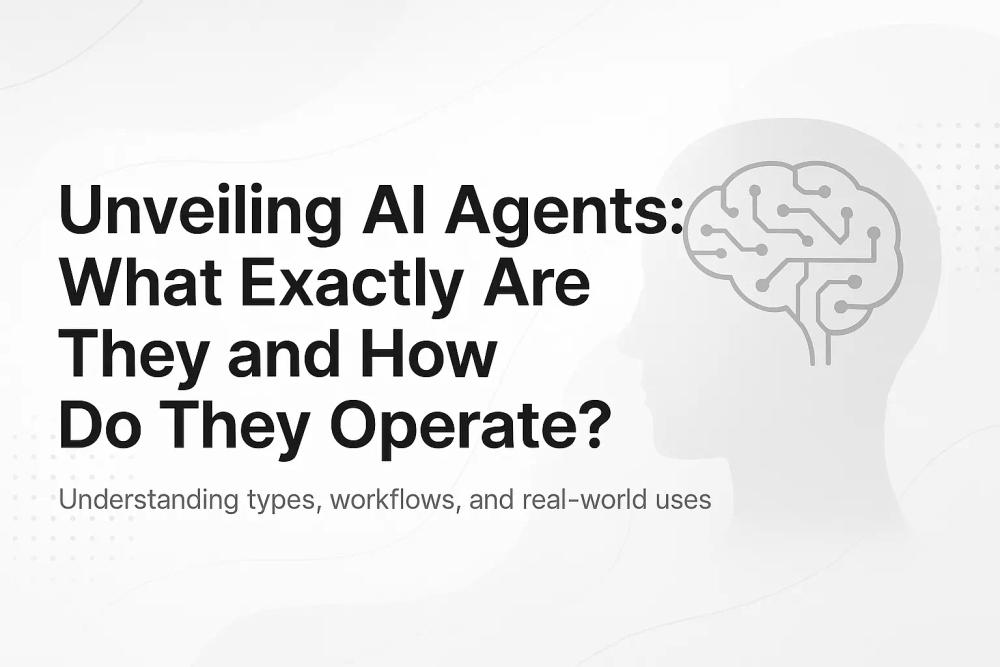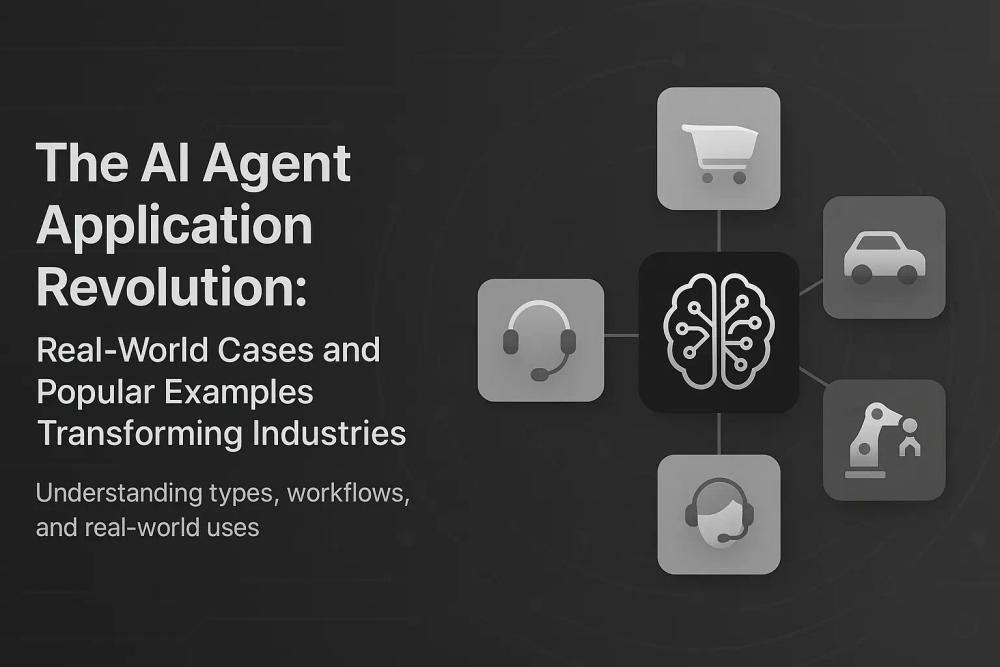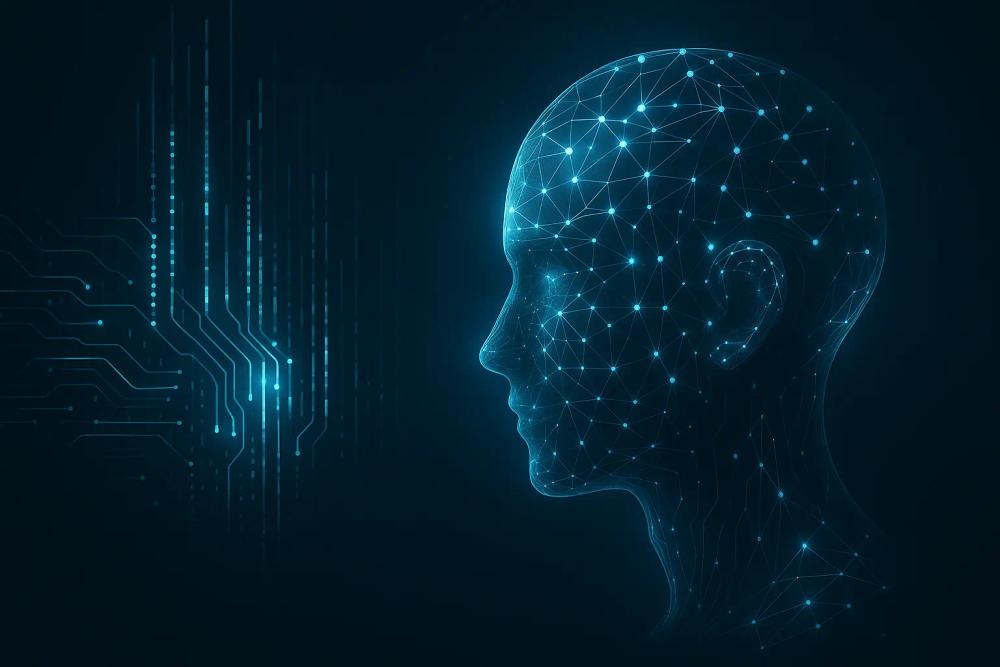
So, you now know that an AI Agent acts like a dedicated 'digital employee.' But the big question remains: how does this employee actually think? What happens inside its digital "brain" between the moment it perceives the world and the moment it takes action?
It’s easy to get lost in technical jargon like "perception-action loops" and "inference engines." These terms can make the inner workings of AI feel like an impenetrable black box.
Our mission in this guide is to lift the hood and show you the engine, piece by piece. We'll move beyond the 'what' and dive deep into the 'how.' You'll see the simple, elegant cycle that powers every agent, understand the different ways they make decisions, and take a special look at how knowledge-based agents use libraries of information to reason like an expert. By the end, you won't just know the terms; you'll have that 'aha!' moment of genuine understanding.
The Precise Definition and Characteristics of an AI Agent
So, what is an AI Agent in more precise terms? An Artificial Intelligence (AI) Agent is an autonomous computational entity that perceives its environment through sensors and acts upon that environment through actuators to achieve specific goals. The essence of an AI agent lies in its ability to make decisions and perform actions independently to fulfill its objectives.
Key characteristics that define AI Agents include:
- Autonomy: Agents can operate without direct human intervention over extended periods. They have control over their actions and internal state.
- Reactivity: Agents can perceive their environment and respond in a timely fashion to changes that occur in it.
- Pro-activeness: Agents do not simply act in response to the environment; they are capable of taking initiative and exhibiting goal-directed behavior by choosing actions that will achieve their objectives.
- Social Ability (in some agents): More advanced agents can interact and communicate with other agents (including humans) to complete their tasks or achieve their goals. This is crucial in multi-agent systems.
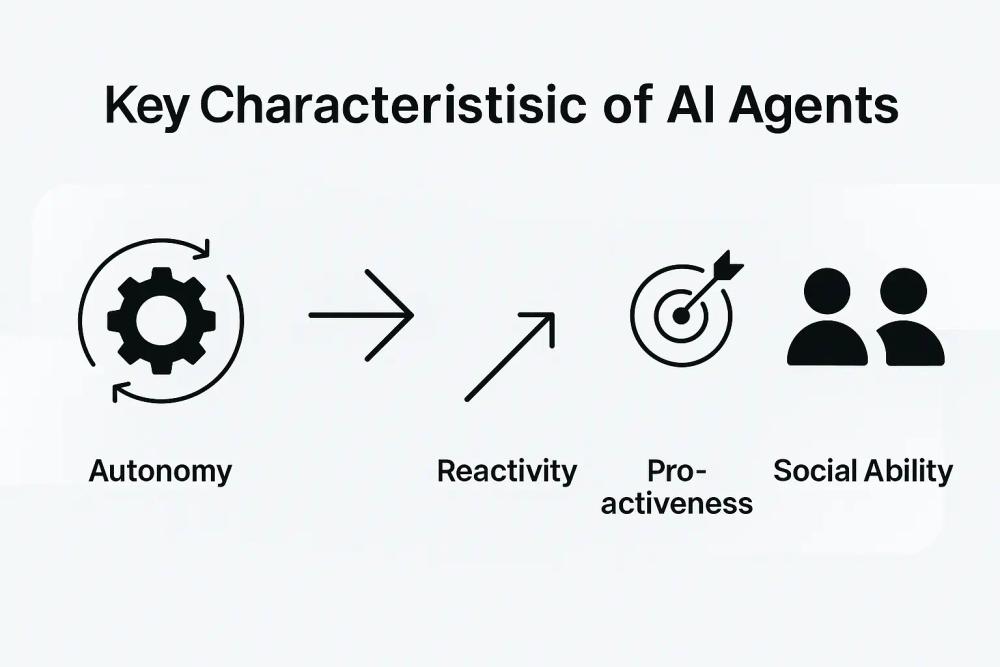
The Fundamental Architecture of an AI Agent: Components and PEAS
To understand how AI agents work, we must first look at their basic building blocks and how their tasks are defined.
Core Components:
- Environment: This is the world or context in which the agent exists and operates. It can be physical (a room for a robot vacuum), virtual (a game world for a game AI), or software-defined (the internet for a web crawler). The nature of the environment significantly influences the agent's design.
- Sensors: These are the agent's tools for perceiving or "seeing" the environment. Examples include cameras, microphones, infrared sensors, GPS, APIs for data retrieval, or even user input from a keyboard.
- Actuators: These are the agent's tools for acting upon or "changing" the environment. Examples include robotic limbs, motors, display screens, speech synthesizers, or commands sent to other software modules.
- Agent Function/Program: This is the internal "brain" or logic that maps a sequence of percepts (sensory inputs) to an action. It's the core intelligence of the agent.
PEAS Framework:
To design an agent effectively, a common approach is to use the PEAS framework, which stands for:
- P - Performance Measure: How is the success of the agent evaluated? What criteria define a good outcome? (e.g., cleanliness for a vacuum robot, score for a game AI, relevance of information for a search agent).
- E - Environment: What are the characteristics of the agent's operational domain? (e.g., a dynamic, partially observable office for a delivery robot).
- A - Actuators: What actions can the agent perform? (e.g., move forward, turn, pick up object).
- S - Sensors: How does the agent perceive its environment? (e.g., camera, tactile sensors, sonar).
Example: A Self-Driving Car
- P: Safety, speed, legality, passenger comfort, efficiency.
- E: Roads, other vehicles, pedestrians, traffic signals, weather.
- A: Steering wheel, accelerator, brake, signals, horn, display.
- S: Cameras, LiDAR, radar, GPS, sonar, speedometer, odometer, engine sensors.
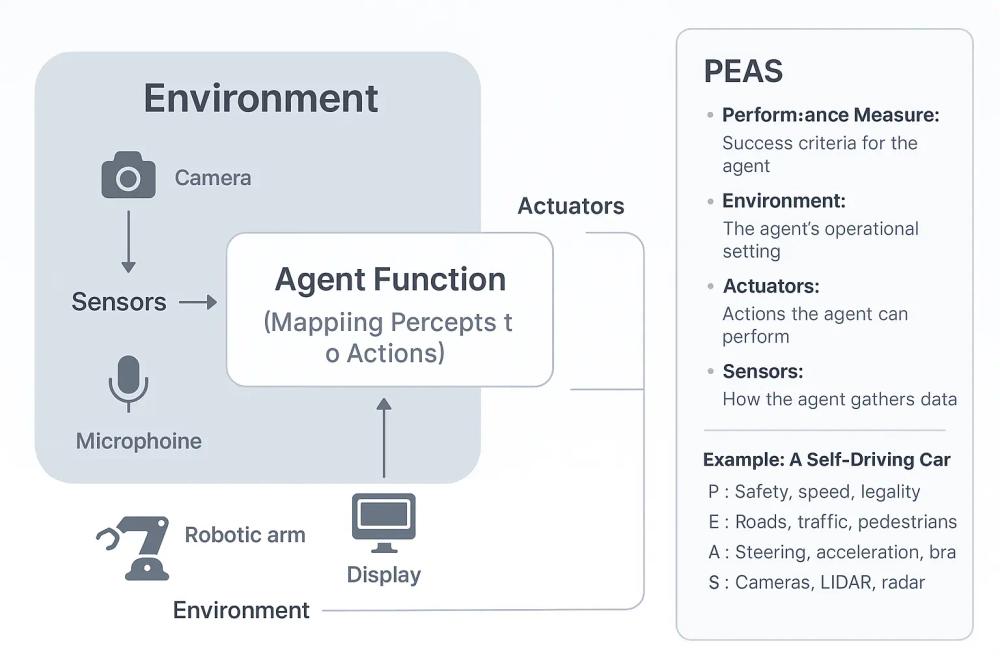
The AI Agent's Workflow Explained: The Perceive-Think-Act Cycle
The operational flow of an AI agent is often described as a Perceive-Think-Act cycle. This iterative process is fundamental to how AI agents work.
- Perceive: The agent uses its sensors to gather information about the current state of its environment. This collection of sensory inputs at a given instant is called a "percept."
- AI Agent Key Components (AI Agent Key Components) like sensors are critical here.
- Think (Decision-Making): This is the most complex part, where the agent processes the percepts. Based on its programming, its internal model of the world (if it has one), its goals, and potentially its past experiences, the agent decides on an action.
- The AI Agent Decision-Making Process (AI Agent's Decision-Making Process) can range from:
- Simple Reflexes: Direct mapping from percept to action (e.g., if an object is too close, stop).
- Model-Based Reasoning: Using an internal model to understand how the world changes and how its actions affect the world.
- Goal-Based Reasoning: Choosing actions that lead towards a specific goal state.
- Utility-Based Reasoning: Selecting actions that maximize a utility function (a measure of "happiness" or desirability of a state).
- Act: Once a decision is made, the agent executes the chosen action using its actuators. This action then modifies the environment, leading to a new state, and the cycle begins anew.
- AI Agent Interacting with Environment (AI Agent Interacting with Environment) is a continuous feedback loop.

The Impact of Environment Types on AI Agent Behavior
The characteristics of an agent's environment profoundly influence its design and behavior. Key environmental properties include:
- Fully Observable vs. Partially Observable: Can the agent's sensors access the complete state of the environment at all times? If not, it's partially observable, requiring the agent to maintain an internal state or infer hidden aspects.
- Deterministic vs. Stochastic: Is the next state of the environment completely determined by the current state and the agent's action? If there's an element of randomness, it's stochastic.
- Episodic vs. Sequential: Is the agent's experience divided into atomic episodes, where each episode consists of the agent perceiving and then performing a single action? In sequential environments, the current decision can affect all future decisions.
- Static vs. Dynamic: Does the environment change while the agent is deliberating? A static environment is easier to deal with.
- Discrete vs. Continuous: Does the environment have a finite number of distinct states, percepts, and actions? Continuous environments have an infinite range.
- Single-Agent vs. Multi-Agent: Is the agent operating by itself, or are there other agents in the environment? Multi-agent environments can be competitive or cooperative.
Understanding these properties is crucial for building an agent that can perform effectively. For instance, an agent in a dynamic, partially observable, and stochastic environment (like a real-world robot) needs far more complex reasoning and adaptation capabilities than an agent in a static, fully observable, and deterministic environment (like a simple puzzle solver).
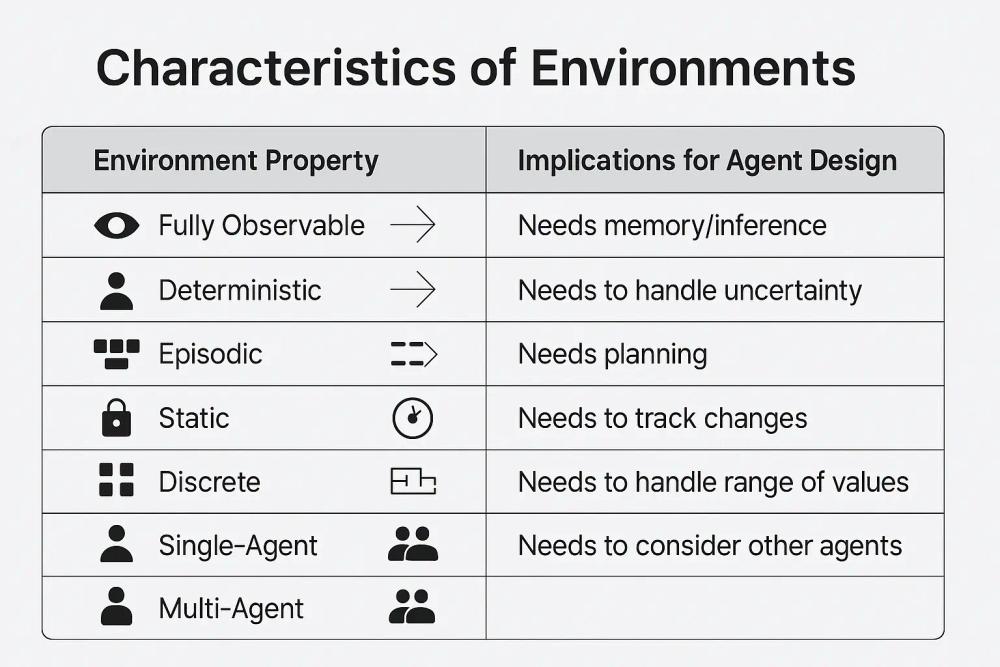
Rationality and Intelligence in AI Agents
A central concept in AI agent design is rationality. A rational agent is one that, for each possible percept sequence, selects an action that is expected to maximize its performance measure, given the evidence provided by the percept sequence and whatever built-in knowledge the agent has.
It's important to distinguish rationality from:
- Omniscience: An omniscient agent knows the actual outcome of its actions and can act accordingly. Rationality, however, is about maximizing expected performance based on available information. An agent can be rational yet still make a mistake if its information is incomplete or incorrect.
- Perfection: Rationality doesn't imply perfection. It means acting optimally given the circumstances and available knowledge.
Intelligence in this context refers to the agent's ability to achieve its goals effectively and efficiently, often involving learning and adaptation to improve its rationality over time. The more complex the environment and the more sophisticated the performance measure, the more "intelligent" an agent needs to be.

Key Technologies Powering AI Agents: The Engine Room
The sophisticated capabilities of modern AI agents are built upon several core technologies. The AI Agent Core Technology Stack Behind AI Agents (Core Technology Stack Behind AI Agents) includes:
- Machine Learning (ML): This enables agents to learn from data and experience, improving their performance over time without explicit programming for every scenario. Techniques include supervised learning, unsupervised learning, and reinforcement learning (especially relevant for agents learning to act in an environment).
- Natural Language Processing (NLP): Crucial for agents that need to understand and generate human language, such as chatbots, virtual assistants, and agents that process textual information.
- Search Algorithms and Planning: These techniques allow agents to explore possible sequences of actions to find a path to their goals. Algorithms like A*, Breadth-First Search, and Depth-First Search are fundamental for problem-solving agents.
- Knowledge Representation and Reasoning (KRR): This field focuses on how an agent can represent knowledge about the world and use that knowledge to make logical inferences and decisions. This is the bedrock of knowledge-based agents.
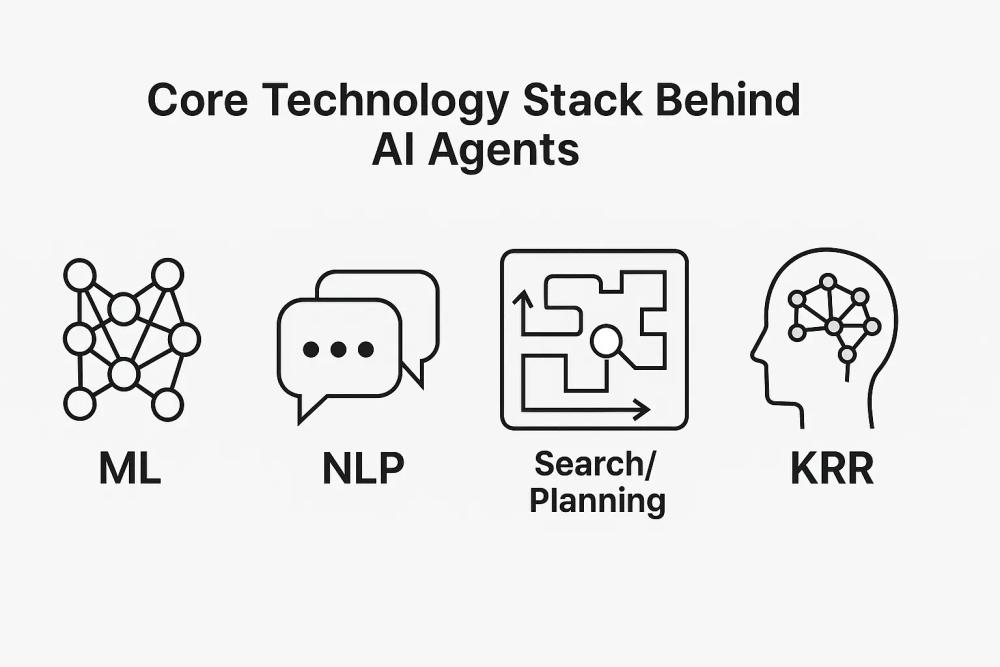
Focus on Knowledge-Based Agents: The Power of Knowing
A significant type of AI agent that relies heavily on KRR is the knowledge-based agent. These agents maintain and use a Knowledge Base (KB) – a set of sentences or facts about the world, expressed in a formal knowledge representation language.
Core Components of a Knowledge-Based Agent:
- Knowledge Base (KB): Contains the agent's knowledge about its environment, domain rules, and task-specific information. This knowledge is typically represented in a declarative way (facts and rules).
- Inference System (or Inference Engine - IS): A set of procedures or algorithms that can deduce new information from the existing knowledge in the KB. It allows the agent to reason about its percepts and decide on actions.
How They Work:
A knowledge-based agent in artificial intelligence operates primarily through two fundamental interactions with its KB:
- TELL: When the agent perceives new information from the environment, it "TELLS" this information to the KB, adding new sentences or facts.
- ASK: Before making a decision, the agent "ASKS" the KB what action it should take, given the current percepts and its goals. The inference engine uses the knowledge in the KB to derive an answer.
Example: A Medical Diagnostic Agent
- KB: Contains medical knowledge (symptoms, diseases, relationships, treatment protocols).
- TELL: A doctor inputs a patient's symptoms.
- ASK: The agent is asked for a possible diagnosis or recommended tests.
- Inference System: Uses rules like "IF patient has symptom X AND symptom Y, THEN consider disease Z" to reason and provide an answer.
The power of knowledge-based agents in AI lies in their ability to make decisions based on explicitly represented knowledge, making their reasoning potentially more transparent and adaptable by updating the KB.
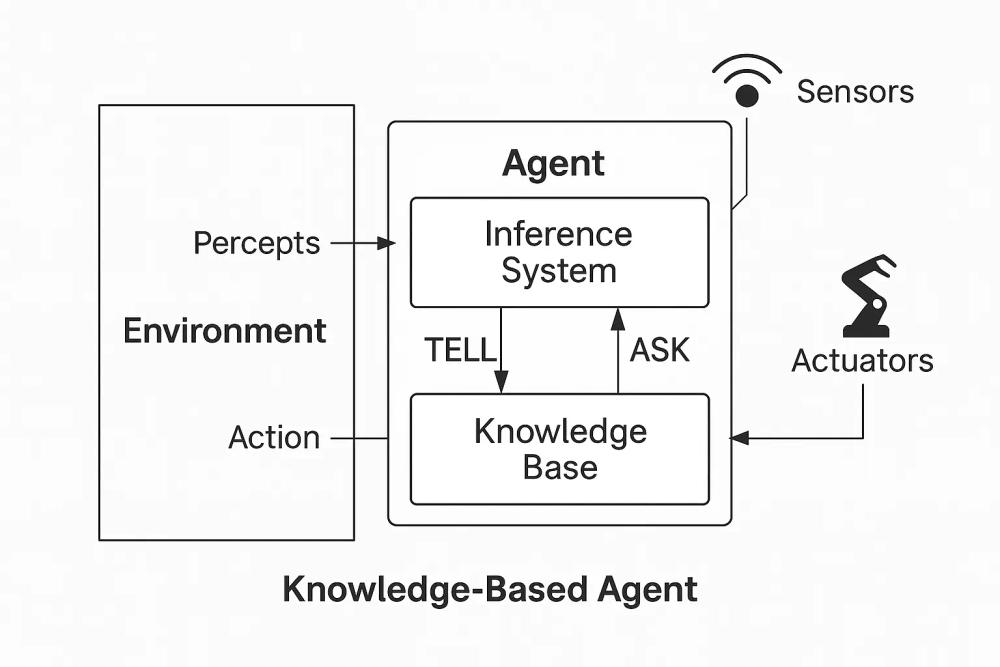
Conclusion: Understanding the Foundations of Intelligent Action
AI agents are far more than just lines of code; they are sophisticated entities designed to perceive, reason, and act intelligently within their environments. We've explored their precise definition, the crucial PEAS framework for their design, the fundamental Perceive-Think-Act cycle that governs their operations, and the impact of diverse environmental factors. Furthermore, we've touched upon the essence of rationality and delved into the key technologies, with a special emphasis on the workings of knowledge-based agents.
This detailed understanding of what AI agents are and how they operate provides a solid foundation. With this knowledge, you're now better equipped to appreciate the different forms these agents can take.
Understanding these core concepts is the first step towards appreciating the transformative potential of AI agents across countless applications.

